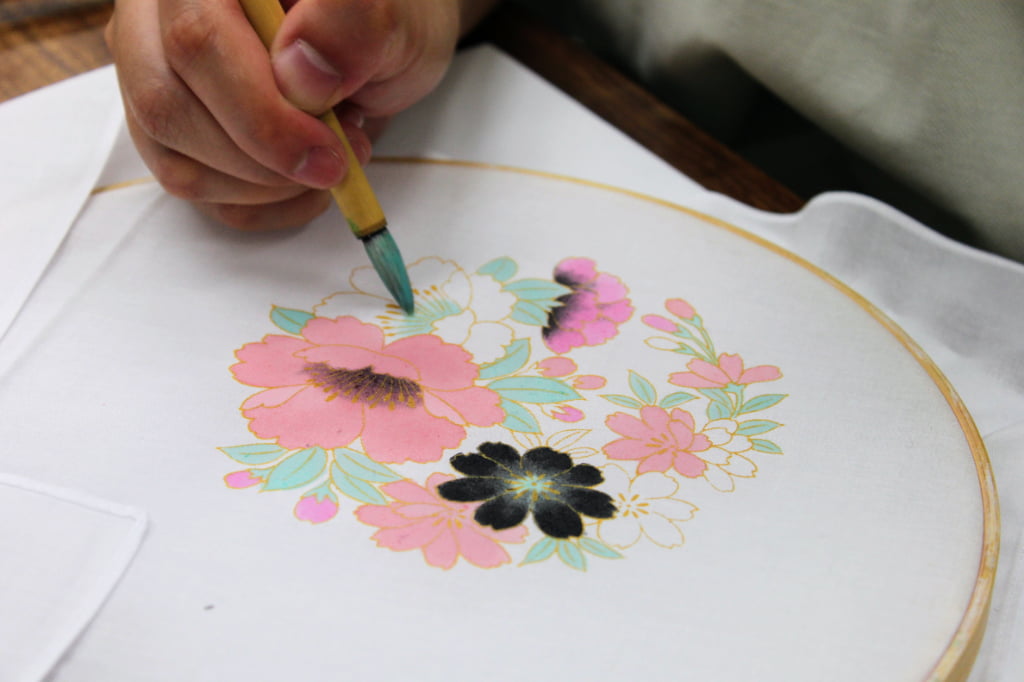Tegaki-Yuzen
About Tegaki-Yuzen
Tegaki‑Yuzen is a hand‑painted resist‑dyeing technique for textiles—especially silk—where craftsmen draw outlines using rice‑paste (ito‑me nori), then apply color inside the lines. This method allows for vibrant, intricate designs, rich shading (gradients), and stable colors that resist washing. Unlike stencil methods, all colors and lines are applied freehand, often by a single artisan from sketch to finish
History of Tegaki-Yuzen
Tegaki-Yuzen, a hand-painted resist dyeing technique, originated in Kyoto in the late 17th century. It was developed by Miyazaki Yuzensai, a fan painter who introduced freehand drawing with rice-paste outlines, enabling vibrant, intricate designs on kimono. The technique quickly gained popularity among townspeople for its elegant and expressive style. In the 18th century, it spread to Edo (now Tokyo), where a more restrained and sophisticated variation evolved, reflecting the urban aesthetic of the samurai and merchant classes. Over time, Tegaki-Yuzen became widely used for formal kimono. In 1980, Tokyo-style Tegaki-Yuzen was officially recognized as a Traditional Craft by the Japanese government, preserving this refined dyeing art for future generations.

